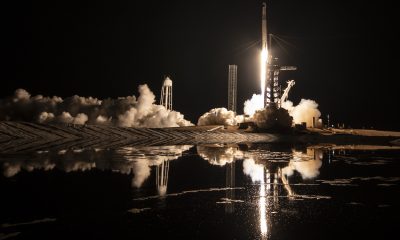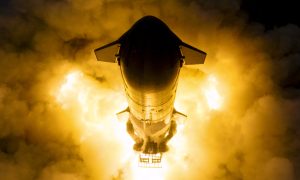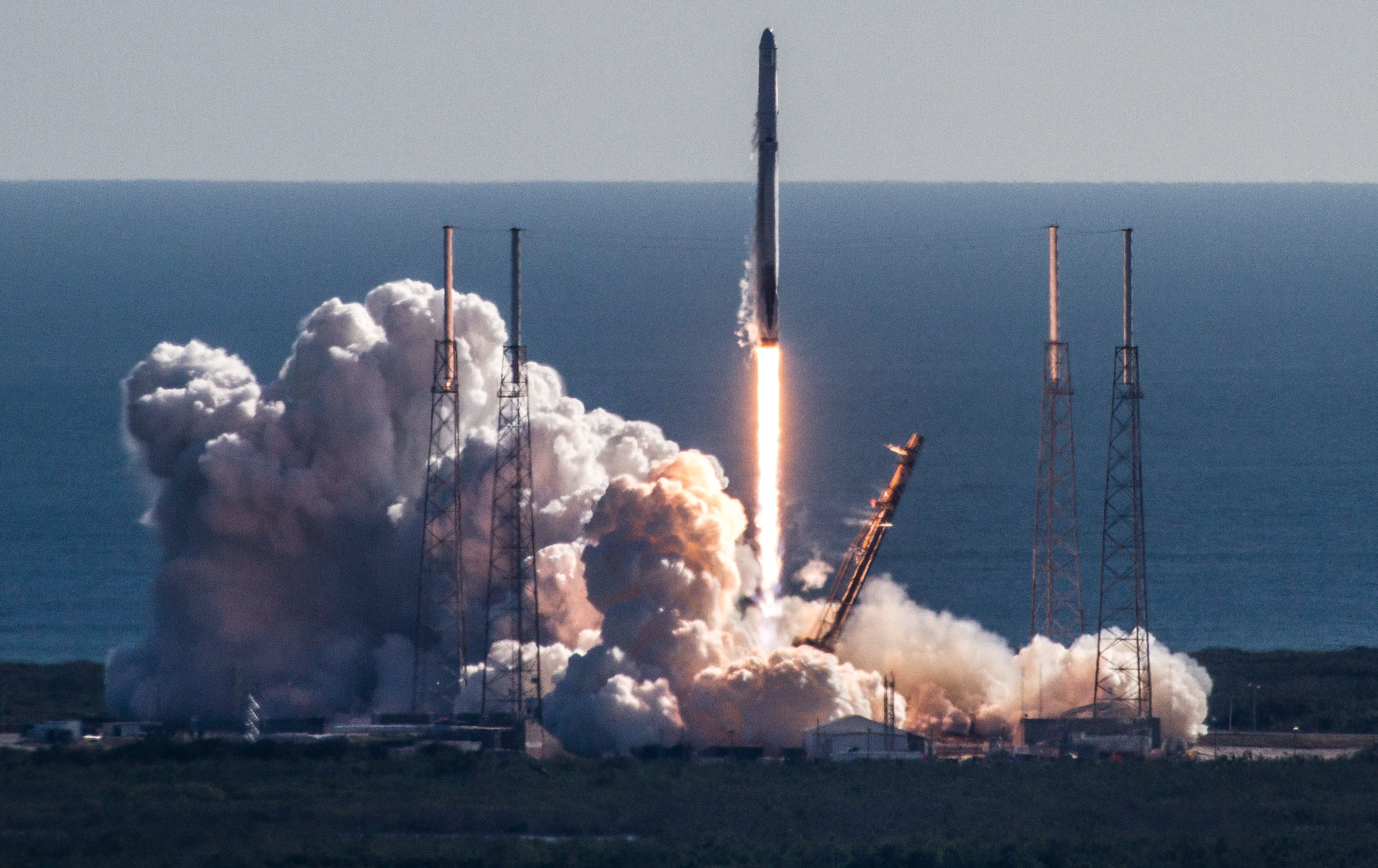

News
SpaceX ready for one more mission before Falcon Heavy’s maiden launch
Set to be the nightcap of relatively slow January for SpaceX, the rocket company is nearing the end of preparations for the launch of a communications satellite co-owned by SES and the government of Luxembourg, known as GovSat-1/SES-16. Scheduled to lift off no earlier than 4:25PM EST (2125 GMT) on Tuesday, January 30, the launch will continue SES’ tradition of flying aboard reused SpaceX rockets, with the ~4000 kg communication satellite expected to be carried into orbit by Falcon 9 B1032 (Booster #32), a booster that first flew during the May 2017 launch of the National Reconnaissance Office’s (NRO) classified NROL-76 spacecraft.

A panorama of LC-40 ahead of its return to flight, the CRS-13 Cargo Dragon mission. The same pad will host GovSat-1 in just over 24 hours. (Tom Cross/Teslarati)
Following an incredible six flight-proven Falcon 9 launches in 2017, the very first year SpaceX began flying reused rockets, GovSat-1 will mark the first of many, many additional flight-proven launches to come in 2018. Even before the inaugural flights of the purpose-built, highly reusable Block 5 of Falcon 9, currently slated for sometime in the next several months, SpaceX is expected to conduct a flurry of flight-proven launches as it wears down its stock of soon-to-be-outdated rockets of the Block 3 and 4 varieties. Educated estimates place the number of reused launches at around five between February and April 2018, six if Falcon Heavy is included (both side boosters are flight-proven). A minimum of six more reused Falcon 9s are then expected to fly between May and the end of 2018, and this almost certainly does not account for the imminent introduction of Block 5.
It is reasonable to assume that the first successful flights of Falcon 9 Block 5 and first several manufactured cores will be followed only months later by a phase change towards reusability. This shift will likely see SpaceX move to a mode of operations that strongly encourages and subsidizes reused boosters as the default option for customers, with flights aboard new cores a comparatively rare alternative reserved only for unique holdouts like NASA, the USAF, and NRO.
2 Falcons on 2 Pads launching by @SpaceX in next 2 weeks 1st time-#FalconHeavy at #pad39A (l) & #Falcon9 #SES16 #GovSat1 at pad #SLC40 (r) post Jan 26 static fire test at @CapeCanaveralFL AFS. Credit: @ken_kremer https://t.co/5g37NsRw85 #SpaceUpClose pic.twitter.com/Lnoh3sCWUB
— Ken Kremer🇺🇦🇩🇪🇺🇸🚀🧪 (@ken_kremer) January 27, 2018
Somewhat sadly, the inherent engineering limits of older versions of Falcon 9 and the imminent introduction of Block 5 mean that SpaceX has less and less of a need to recover flight proven boosters that have no hope of being cost-effectively refurbished and conducting additional flights. This attitude was highlighted with the fourth launch of ten Iridium NEXT satellites in late December 2017, which saw a flight-proven Falcon 9 conduct a controlled ocean ditch after separating from the second stage. While crew aboard at least one of SpaceX’s fleet of recovery vessels were tasked with attempting to recover any accessible floating debris after the first stage ditched into the ocean, it was very much intentionally expended, and SpaceX’s West coast drone ship never left port. GovSat-1 will see this intentional practice of expending recoverable boosters continue – Falcon 9 B1032 is also expected to ditch into the ocean, with no recovery attempt being made aboard the drone ship Of Course I Still Love You.
Nevertheless, SpaceX-leased recovery vessels GO Quest and GO Searcher were both seen leaving Port Canaveral, Florida yesterday, presumably in order to attempt the recovery of either floating debris from the first stage and/or the rocket’s payload fairing, a milestone that SpaceX is still striving to reach.
L-1 day #Falcon9 launch weather forecast. Forecast is unchanged from yesterday. A 40% chance of acceptable conditions in the 2hr launch window tomorrow with the primary concern being winds. #SpaceX #SES #SES16 #GovSat1 pic.twitter.com/PoUx9V0qK7
— Chris G (@ChrisG_SpX) January 29, 2018
Follow along live as launch photographer Tom Cross and I cover these exciting proceedings as close to live as possible. Tom will be heading to Cape Canaveral Air Force Station early tomorrow morning in order to set up his remote cameras to capture yet another beautiful SpaceX launch.
Teslarati – Instagram – Twitter
Tom Cross – Instagram
Eric Ralph – Twitter
News
Tesla begins Robotaxi certification push in Arizona: report
Tesla seems serious about expanding its Robotaxi service to several states in the coming months.

Tesla has initiated discussions with Arizona transportation regulators to certify its driverless Robotaxi service in the state, as per a recent report from Bloomberg News. The move follows Tesla’s launch of its Robotaxi pilot program in Austin, Texas, as well as CEO Elon Musk’s recent comments about the service’s expansion in the Bay Area.
The Arizona Department of Transportation confirmed to Bloomberg that Tesla has reached out to begin the certification process for autonomous ride-sharing operations in the state. While details remain limited, the outreach suggests that Tesla is serious about expanding its driverless Robotaxi service to several territories in the coming months.
The Arizona development comes as Tesla prepares to expand its service area in Austin this weekend, as per CEO Elon Musk in a post on X. Musk also stated that Tesla is targeting the San Francisco Bay Area as its next major market, with a potential launch “in a month or two,” pending regulatory approvals.
Tesla first launched its autonomous ride-hailing program on June 22 in Austin with a small fleet of Model Y vehicles, accompanied by a Tesla employee in the passenger seat to monitor safety. While still classified as a test, Musk has said the program will expand to about 1,000 vehicles in the coming months. Tesla will later upgrade its Robotaxi fleet with the Cyercab, a two-seater that is designed without a steering wheel.
Sightings of Cybercab castings around the Giga Texas complex suggests that Tesla may be ramping the initial trial production of the self-driving two-seater. Tesla, for its part, has noted in the past that volume production of the Cybercab is expected to start sometime next year.
In California, Tesla has already applied for a transportation charter-party carrier permit from the state’s Public Utilities Commission. The company is reportedly taking a phased approach to operating in California, with the Robotaxi service starting with pre-arranged rides for employees in vehicles with safety drivers.
News
Tesla sets November 6 date for 2025 Annual Shareholder Meeting
The automaker announced the date on Thursday in a Form 8-K.

Tesla has scheduled its 2025 annual shareholder meeting for November 6, addressing investor concerns that the company was nearing a legal deadline to hold the event.
The automaker announced the date on Thursday in a Form 8-K submitted to the United States Securities and Exchange Commission (SEC). The company also listed a new proposal submission deadline of July 31 for items to be included in the proxy statement.
Tesla’s announcement followed calls from a group of 27 shareholders, including the leaders of large public pension funds, which urged Tesla’s board to formally set the meeting date, as noted in a report from The Wall Street Journal.
The group noted that under Texas law, where Tesla is now incorporated, companies must hold annual meetings within 13 months of the last one if requested by shareholders. Tesla’s previous annual shareholder meeting was held on June 13, 2024, which placed the July 13 deadline in focus.
Tesla originally stated in its 2024 annual report that it would file its proxy statement by the end of April. However, an amended filing on April 30 indicated that the Board of Directors had not yet finalized a meeting date, at least at the time.
The April filing also confirmed that Tesla’s board had formed a special committee to evaluate certain matters related to CEO Elon Musk’s compensation plan. Musk’s CEO performance award remains at the center of a lengthy legal dispute in Delaware, Tesla’s former state of incorporation.
Due to the aftermath of Musk’s legal dispute about his compensation plan in Delaware, he has not been paid for his work at Tesla for several years. Musk, for his part, has noted that he is more concerned about his voting stake in Tesla than his actual salary.
At last year’s annual meeting, TSLA shareholders voted to reapprove Elon Musk’s compensation plan and ratified Tesla’s decision to relocate its legal domicile from Delaware to Texas.
Elon Musk
Grok coming to Tesla vehicles next week “at the latest:” Elon Musk
Grok’s rollout to Tesla vehicles is expected to begin next week at the latest.
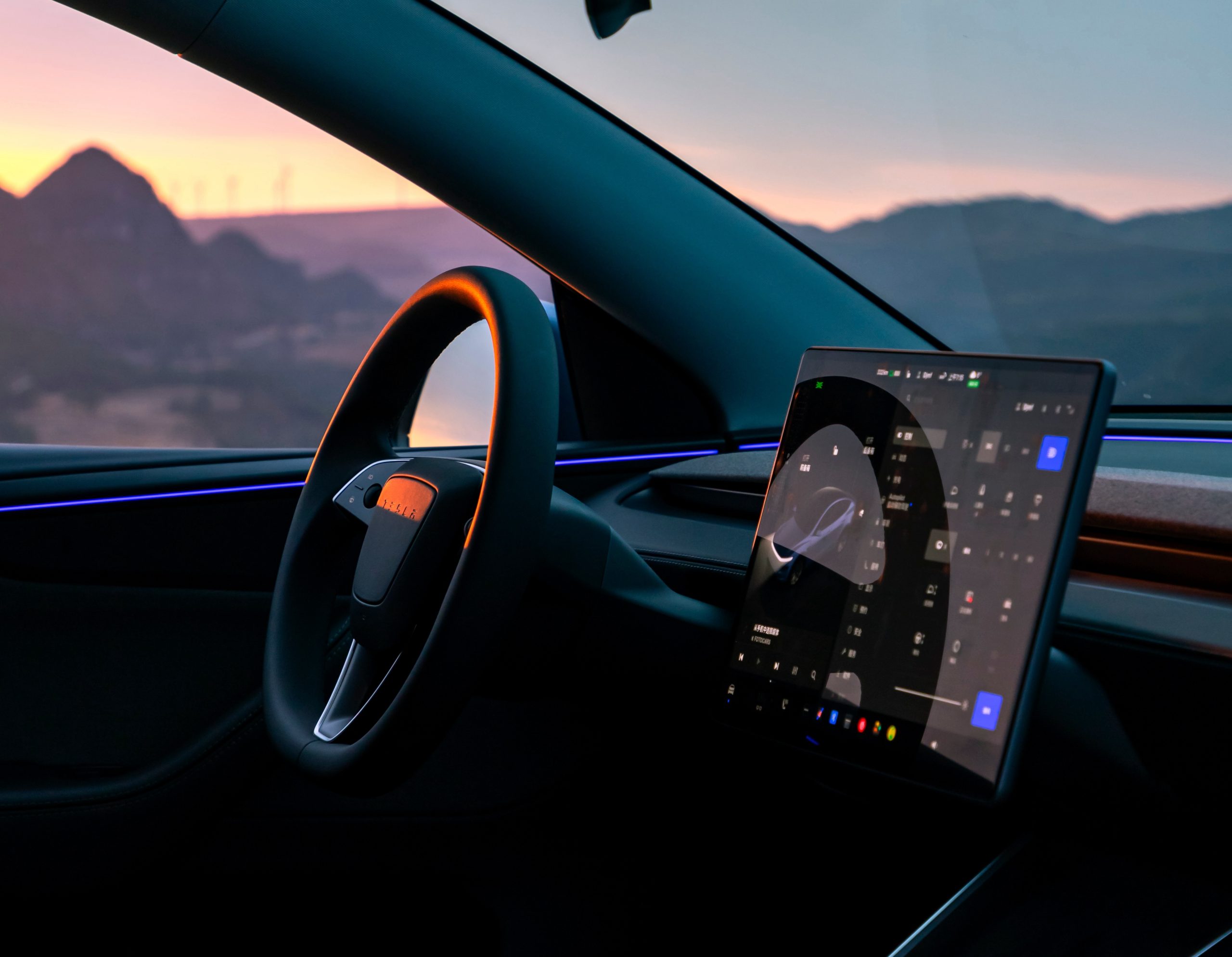
Elon Musk announced on Thursday that Grok, the large language model developed by his startup xAI, will soon be available in Tesla vehicles. Grok’s rollout to Tesla vehicles is expected to begin next week at the latest, further deepening the ties between the two Elon Musk-led companies.
Tesla–xAI synergy
Musk confirmed the news on X shortly after livestreaming the release of Grok 4, xAI’s latest large language model. “Grok is coming to Tesla vehicles very soon. Next week at the latest,” Musk wrote in a post on social media platform X.
During the livestream, Musk and several members of the xAI team highlighted several upgrades to Grok 4’s voice capabilities and performance metrics, positioning the LLM as competitive with top-tier models from OpenAI and Google.
The in-vehicle integration of Grok marks a new chapter in Tesla’s AI development. While Tesla has long relied on in-house systems for autonomous driving and energy optimization, Grok’s integration would introduce conversational AI directly into its vehicles’ user experience. This integration could potentially improve customer interaction inside Tesla vehicles.
xAI and Tesla’s collaborative footprint
Grok’s upcoming rollout to Tesla vehicles adds to a growing business relationship between Tesla and xAI. Earlier this year, Tesla disclosed that it generated $198.3 million in revenue from commercial, consulting, and support agreements with xAI, as noted in a report from Bloomberg News. A large portion of that amount, however, came from the sale of Megapack energy storage systems to the artificial intelligence startup.
In July 2023, Musk polled X users about whether Tesla should invest $5 billion in xAI. While no formal investment has been made so far, 68% of poll participants voted yes, and Musk has since stated that the idea would be discussed with Tesla’s board.
-

 Elon Musk1 week ago
Elon Musk1 week agoTesla investors will be shocked by Jim Cramer’s latest assessment
-

 Elon Musk18 hours ago
Elon Musk18 hours agoxAI launches Grok 4 with new $300/month SuperGrok Heavy subscription
-

 Elon Musk3 days ago
Elon Musk3 days agoElon Musk confirms Grok 4 launch on July 9 with livestream event
-

 News7 days ago
News7 days agoTesla Model 3 ranks as the safest new car in Europe for 2025, per Euro NCAP tests
-
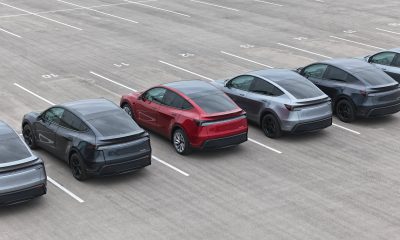
 Elon Musk2 weeks ago
Elon Musk2 weeks agoA Tesla just delivered itself to a customer autonomously, Elon Musk confirms
-

 Elon Musk1 week ago
Elon Musk1 week agoxAI’s Memphis data center receives air permit despite community criticism
-

 Elon Musk2 weeks ago
Elon Musk2 weeks agoTesla’s Omead Afshar, known as Elon Musk’s right-hand man, leaves company: reports
-
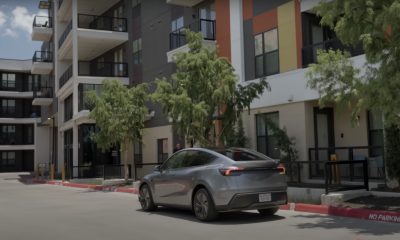
 News2 weeks ago
News2 weeks agoXiaomi CEO congratulates Tesla on first FSD delivery: “We have to continue learning!”


